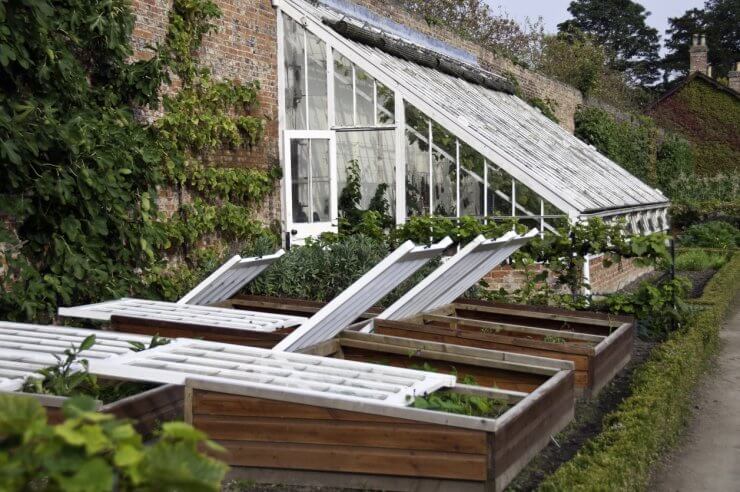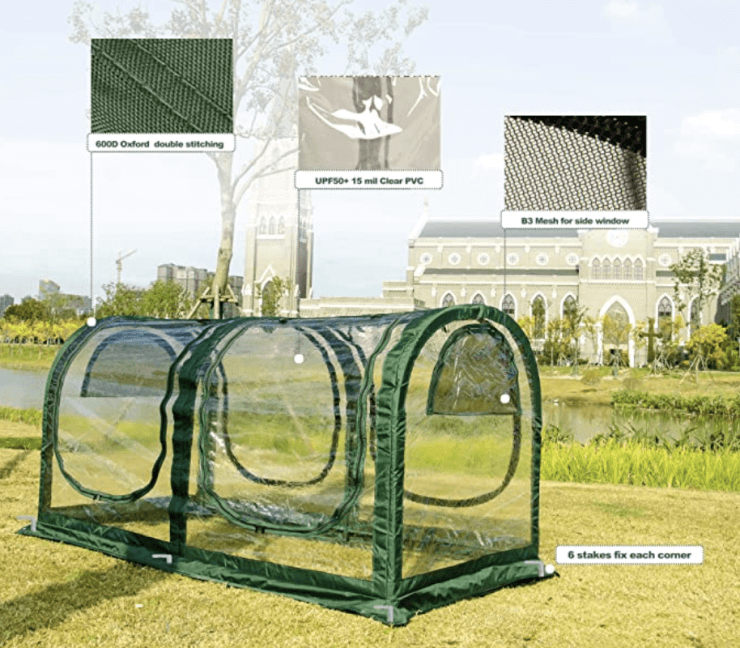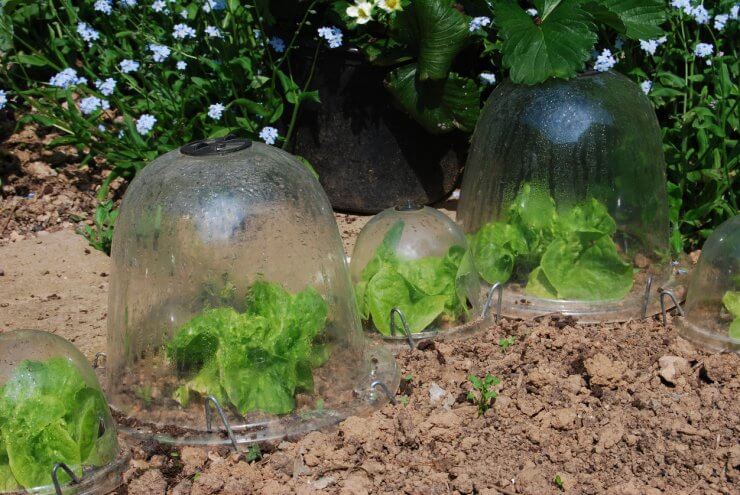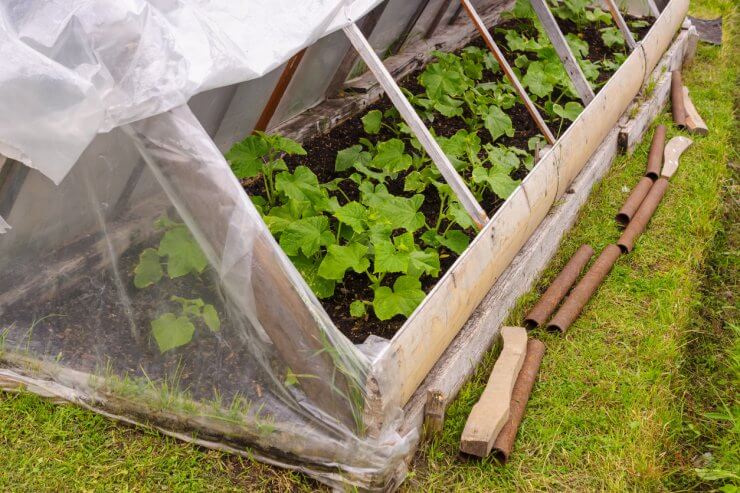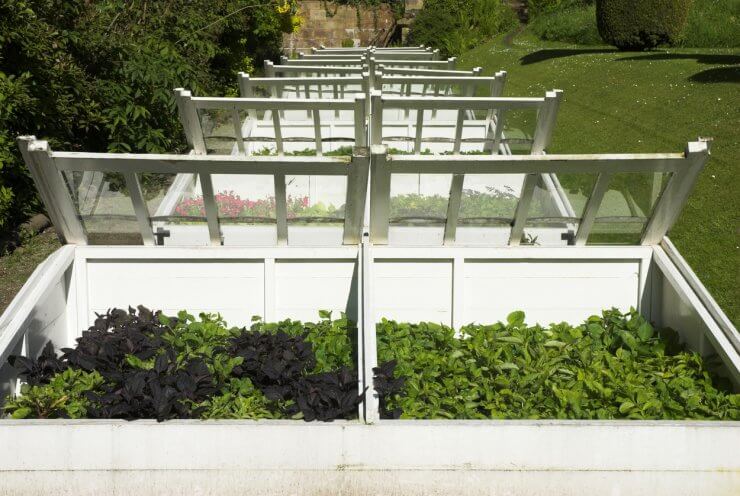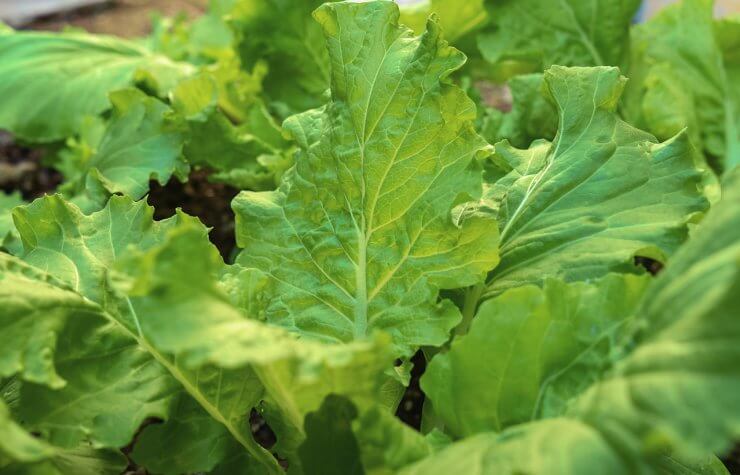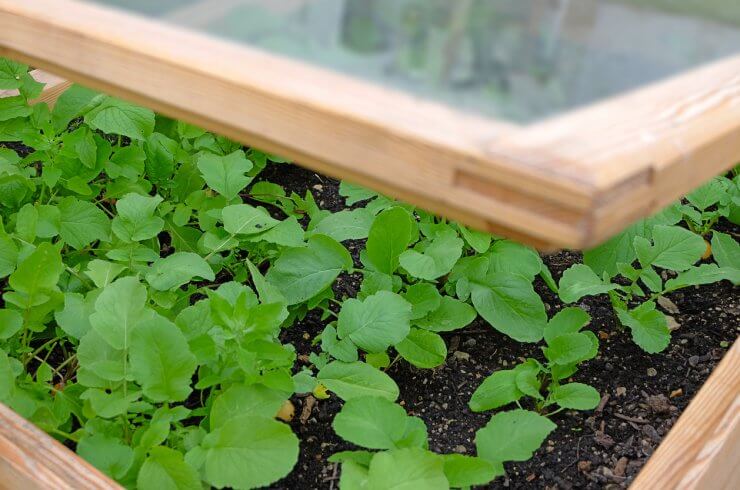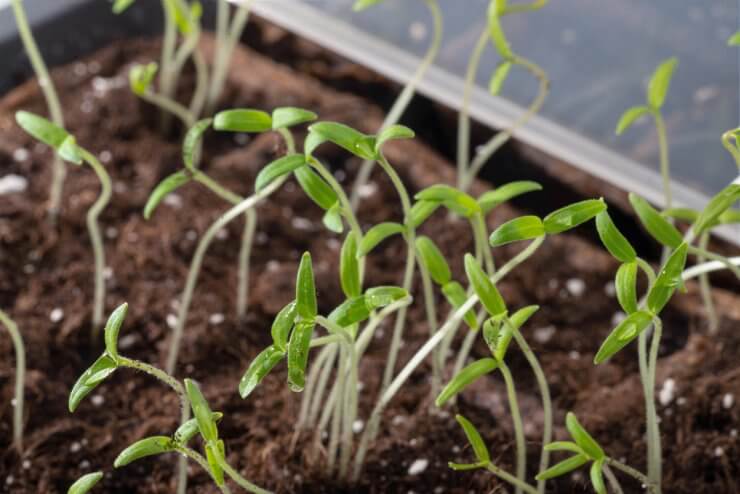
I’ve always been a bit obsessed with growing lettuce. There’s something so satisfying about harvesting crisp, fresh leaves right from your own garden. For years, I’ve been on a mission to grow lettuce year-round. In the depths of winter, I rely on my hydroponic setup indoors, but for a long time, I struggled with the transition seasons. Every fall, I’d watch sadly as my outdoor lettuce succumbed to the first frost, leaving a gap in my continuous harvest.
That all changed the day I discovered cold frames. It was a chilly autumn evening, and I was lamenting to my neighbor about how I’d have to say goodbye to my beloved outdoor lettuce crop soon. She gave me a knowing smile and said, “Not necessarily.” That’s when she introduced me to the world of cold frames.
At first, I was skeptical. How could a simple box with a clear lid bridge the gap between my outdoor summer crop and my indoor winter setup? But curiosity got the better of me, and I decided to give it a try. I cobbled together a makeshift cold frame using an old window and some scrap wood from my shed. It wasn’t pretty, but it did the job. To my amazement, that rudimentary cold frame kept my lettuce going well into November, seamlessly connecting my growing seasons. I was hooked. Since then, cold frames have become an integral part of my year-round lettuce-growing strategy, allowing me to enjoy garden-fresh greens in all four seasons. If you’re anything like me and always looking to squeeze a few more weeks out of your garden, let me tell you, cold frames might just be the secret weapon you’ve been looking for.
What’s a Cold Frame, Anyway?
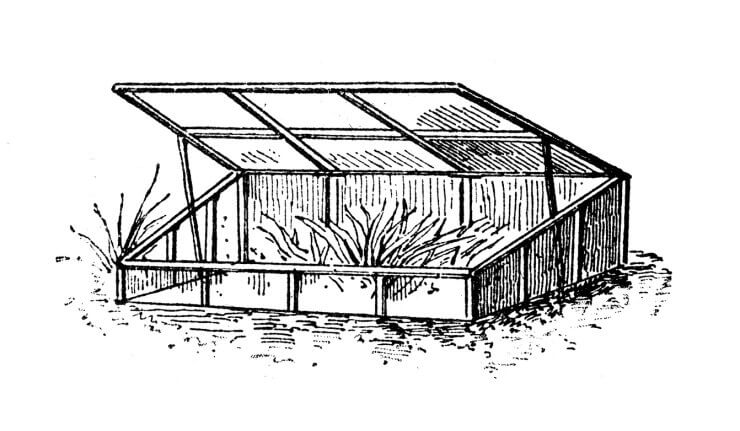
For those of you new to cold frames, think of a cold frame as a mini-greenhouse that sits right on the ground. It’s basically a box with a transparent lid that lets sunlight in but keeps the cold air out. The beauty of a cold frame is that it creates a microclimate that’s several degrees warmer than the outside air, allowing you to extend your growing season on both ends – earlier in the spring and later into the fall.
Now, I know what you’re thinking: “Isn’t that just a fancy box?” Well, yes and no. The magic of a cold frame lies in its simplicity. It’s a low-tech solution that can make a world of difference in your garden.
Types of Cold Frames: From DIY to Store-Bought
There’s a cold frame out there for every gardener, regardless of your DIY skills or physical abilities. Let’s break down some options:
1. The Classic Wooden Frame
This is what most people think of when they hear “cold frame.” It’s typically a wooden box with a glass or polycarbonate lid. I built my first one out of some old windows and scrap lumber, and let me tell you, it was a game-changer for my fall lettuce crop.
2. The PVC Pipe Wonder
For those who want something lighter and easier to move, a PVC pipe frame covered with plastic sheeting can work wonders. It’s not as durable as wood, but it’s incredibly easy to set up and take down. Watch my video from when I made my own hoop house.
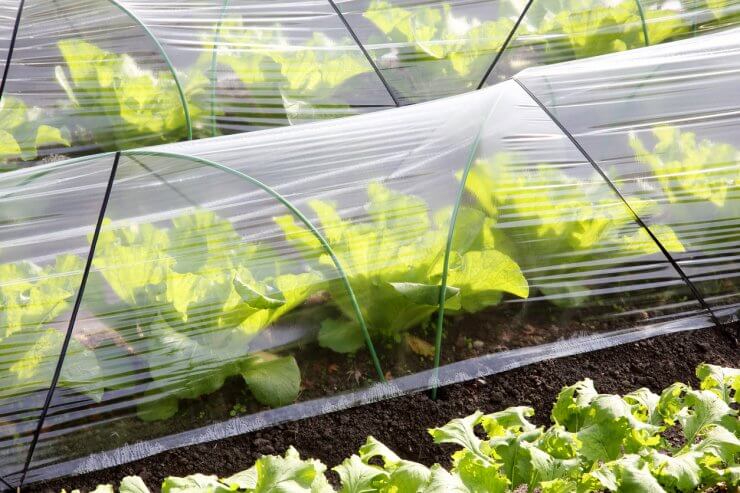
3. Prefab Plastic Units
If DIY isn’t your thing, or you’re looking for something that’s easy to set up and store, there are plenty of ready-made plastic cold frames on the market. They’re lightweight, durable, and often come with features like adjustable vents.
For ease of use and storage in the off-season, a lot of gardeners like this Porayhut Portable Greenhouse Tent for in-ground gardens. It lays flat against the earth, weighs only 11 pounds, and the dimensions are 71 x 35.4 x 35.4 inches fully assembled. Broken down, it is 36.2 x 5.51 x 11.42 inches. It’s easy to assemble, though it’s by no means a pop-up tent, and is a little higher than waist height for most people.
4. The Cloche
For those with limited space or mobility, individual cloches (essentially mini cold frames for single plants) can be a great option. They’re easy to place and remove, and can be as simple as a plastic milk jug with the bottom cut off.
The Simplest Cold Frames to Build or Buy
For the DIY enthusiasts among us, the easiest cold frame to build is probably the wooden box with a hinged lid. All you need are some boards, screws, and an old window or piece of polycarbonate. If you’re handy with a saw and drill, you can knock one out in an afternoon.
But let’s face it, not everyone has the time, tools, or inclination to build their own. For those folks, I’d recommend looking into collapsible plastic cold frames. They’re affordable, easy to set up, and can be stored flat when not in use. Perfect for those of us who are short on space or not quite as spry as we used to be.
Materials Matter: What Goes Into a Cold Frame
The materials you use can make a big difference in how well your cold frame performs. Here’s a quick rundown:
- Frame: Wood is classic and insulates well, but can rot over time. Cedar or redwood are naturally rot-resistant. Plastic is lightweight and durable but doesn’t insulate as well.
- Glazing: This is what lets the light in. Glass is traditional and lets in the most light, but it’s heavy and can break. Polycarbonate is lighter, nearly unbreakable, and provides good insulation. Plastic sheeting is cheap and easy to work with, but it’s not as durable.
- Insulation: Some folks line their cold frames with straw or bubble wrap for extra insulation. I’ve even seen old carpet used to line the sides!
Here’s a little-known fact: the angle of your cold frame’s lid can make a big difference. Ideally, you want it sloped at about 40-45 degrees facing south. This maximizes light penetration in the winter when the sun is low in the sky.
Veggies That Love Cold Frames
Cold frames are great for extending the season for cool-weather crops. Here are some of my favorites:
- Lettuce: This is my cold frame superstar. I’ve harvested fresh lettuce on Christmas Day thanks to my cold frame! Try varieties like ‘Winter Density’ or ‘Arctic King’ for best results. Sow seeds every two weeks for a continuous harvest.
- Spinach: Another leafy green that loves cold frames. It actually gets sweeter after a light frost. ‘Bloomsdale Long Standing’ is a great variety for overwintering.
- Kale: This nutrient-packed green is incredibly cold-hardy. ‘Winterbor’ and ‘Red Russian’ varieties do particularly well in cold frames. You can harvest outer leaves throughout the season, allowing the plant to continue producing.
- Swiss Chard: With its colorful stems, chard adds beauty to your cold frame while providing a steady supply of nutritious greens. ‘Bright Lights’ is a fun, multi-colored variety to try.
- Radishes: These fast-growing veggies are perfect for cold frames. Try winter varieties like ‘China Rose’ or ‘Black Spanish Round’ for harvest throughout the cooler months.
- Carrots: Cold temperatures make carrots sweeter. Sow them in late summer or early fall for a winter harvest. ‘Napoli’ and ‘Mokum’ are great varieties for cold frame growing.
- Beets: Both the roots and greens are edible, making beets a versatile cold frame crop. ‘Bull’s Blood’ is a beautiful variety with deep red leaves.
- Asian Greens: Crops like bok choy, tatsoi, and mizuna thrive in the cool, protected environment of a cold frame. They grow quickly, often ready for harvest in just 30-45 days.
- Scallions: These quick-growing alliums do well in cold frames and add a punch of flavor to winter meals. Try succession planting for a continuous harvest.
- Mâche (Corn Salad): This lesser-known green is incredibly cold-hardy and adds a nutty flavor to winter salads. It’s slow-growing but well worth the wait.
- Arugula: This peppery green grows quickly in cold frames. It can tolerate light freezes and adds a zesty kick to winter dishes.
- Claytonia (Miner’s Lettuce): Another cold-hardy salad green that’s not widely known. It’s packed with vitamin C and has a mild, slightly sweet flavor.
But cold frames aren’t just for fall and winter. In spring, you can use them to get a head start on warm-season crops like tomatoes and peppers. I start my tomatoes in the cold frame about a month before our last frost date, and they’re always ready to hit the ground running when warm weather arrives.
Pro tip: Pay attention to plant height when planning your cold frame crops. Low-growing plants like lettuce and spinach can be placed towards the back of a sloped cold frame, while taller plants like kale should be at the front to avoid shading other crops.
The Good, The Bad, and The Steamy: Pros and Cons of Cold Frames
Like any gardening technique, cold frames have their ups and downs. Let’s break it down:
Pros:
- Extend your growing season by weeks or even months
- Protect plants from frost, wind, and pests
- Create a perfect environment for hardening off seedlings
- Can be used year-round for various gardening tasks
- Relatively inexpensive compared to a full greenhouse
Cons:
- Require some monitoring – they can overheat on sunny days
- Limited space compared to a greenhouse
- May need to water more frequently as rain can’t reach plants
- Can be a hiding spot for slugs and other pests if not managed properly
Here’s a pro tip: on sunny days, even when it’s cold outside, temperatures inside your cold frame can soar. I learned this the hard way when I cooked a whole tray of seedlings! Now I use an automatic vent opener, which is a real game-changer. It uses a wax cylinder that expands when it’s warm, pushing the lid open without any electricity needed. Pretty cool, right?
‘Tis the Season to Give Cold Frames a Try!
Listen, I know I can get a bit long-winded when it comes to gardening (just ask my poor spouse who’s been subjected to many a dinnertime monologue about soil pH), but I really can’t stress enough how much cold frames have revolutionized my gardening game. They’ve allowed me to extend my harvests, get an early start on spring, and generally feel like I’m outsmarting Mother Nature (in a respectful way, of course).
Whether you’re a DIY wizard ready to build your own, or you’re more in the “I just want to buy something and get growing” camp, there’s a cold frame solution out there for you. And let me tell you, there’s nothing quite like the feeling of harvesting fresh veggies from your garden when there’s frost on the ground.
So why not give it a try? Start small if you’re unsure – even a single cold frame can make a big difference. And hey, I’d love to hear about your experiences! Drop me a line and let me know how it goes. Who knows, maybe your cold frame adventures will inspire the next generation of gardening nerds.
Happy growing, and may your harvests be bountiful!


 Previous
Previous
